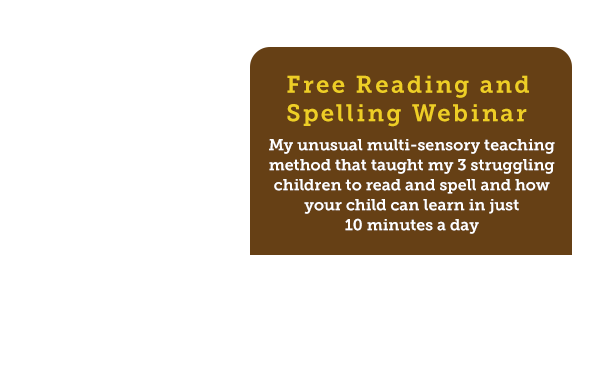While much of the early literature was unpublished and of poor scientific design, there are now numerous controlled studies which have reported positive results for the use of coloured lenses.
These studies have all been reported in peer reviewed journals, using reviewers with expertise in this field, who are unlikely to recommend the publication of studies which are methodologically unsound. I have listed these studies below, with their full references attached.
The largest number of controlled studies report improvement in reading when using coloured plastic overlays, coloured computer monitors, and one study which illuminates text with coloured light.
- Bouldoukian, Wilkins, & Evans, 2002
- Chase, Ashourzadeh, Kelly, Monfette, & Kinsey, 2003
- Croyle, 1998; Evans & Joseph, 2002
- Jeanes, Busby, Martin, Lewis, Stevenson, Pointon et al., 1997
- Kriss & Evans, 2005; Noble, Orton, Irlen, & Robinson, 2004
- Northway, 2003
- Ray, Fowler, & Stein, 2005
- Scott, McWhinnie, Taylor, Stevenson, Irons, & Lewis, 2002
- Singleton & Trotter, 2005
- Solan, Brannan, Ficarra, & Byrne, 1997
- Solan, Ficarra, Brannan, & Rucker, 1998
- Tyrrell, Holland, Dennis, & Wilkins, 1995
- Wilkins, Jeanes, Pumfrey, & Laskier, 1996
- Wilkins & Lewis, 1999
- Wilkins, Lewis, Smith, Rowland, & Tweedie, 2001
- Williams, Le Cluyse, & Littell, 1996
There are also numerous studies which report improvements in eye strain, headaches and reading when using coloured lenses:
- Chronicle & Wilkins, 1991
- Evans, Patel, & Wilkins, 2002
- Good, Taylor, & Mortimer, 1991
- Harris & MacRow-Hill, 1999
- Lightstone, Lightstone, & Wilkins, 1999
- Robinson & Conway, 2000
- Robinson & Foreman, 1999
- Wilkins, 1993
- Wilkins, Patel, Adjamian, & Evans, 2002
In particular, the paper by Chase et al. (2003), describes a series of four studies which found that the accuracy of oral reading was poorer when using red filters in comparison to blue and green filters. These results were used to support physiological evidence that red light suppresses functioning of the Magnocellular visual neural pathway, with reading being better when longer wavelengths of light (red) are removed from the light source by the use of blue filters. A number of these studies have used placebo controls (Bouldoukian et al., 2002; Evans & Joseph, 2002; Jeanes et al., 1997; Ray et al., 2005; Robinson & Foreman, 1999; Wilkins, Evans, Brown, Busby, Wingfield, Jeanes, & Bald, 1994; Wilkins & Lewis, 1999; Wilkins et al., 2002).
Such placebo studies are possible because the effects of coloured filters can be assessed without subjects being aware of the precise chromacity of the colour which provides optimal results for them(Wilkins, Huang, & Cao, 2004). In addition, people who respond to the use of colour are also likely to have abnormalities in accommodation (Simmers, Gray, & Wilkins, 2001), significant changes in visual evoked potentials when using coloured filters (Huang, Cooper, Satana, Kaufman, & Cao, 2003; Riddell, Wilkins, Zemori, Gordon, & Hainline, 1998) as well as differences in biochemical profiles (Robinson, Roberts, McGregor, Dunstan, & Butt, 2001; Sparkes, Robinson, Dunstan, & Roberts, 2003; Sparkes, Robinson, Roberts, & Dunstan, 2006), all of which could not be attributed to placebo effects.
REFERENCES:
Bouldoukian, J., Wilkins, A. J., & Evans, B. J. W. (2002). Randomised controlled trial of the effect of coloured overlays on the rate of reading of people with specific learning difficulties. Ophthalmic and Physiological Optics, 22, 55-60.
Chase, C., Ashourzadeh, A., Kelly, C., Monfette, S., & Kinsey, K. (2003). Can the magnocellular pathway read? Evidence from studies of colour. Vision Research, 43, 1211-1222. Chronicle, E. P. & Wilkins, A. J. (1991).
Colour and visual discomfort in migraineurs. The Lancet, 338, 890.
Croyle, L. (1998). Rate of reading, visual processing, colour and contrast. Australian Journal of Learning Disabilities, 3(3), 13-20
Evans, B. J. W., & Joseph, F. (2002). The effect of coloured filters on the rate of reading in an adult study population. Ophthalmic and Physiological Optics, 22, 525-535.
Evans, B. J. W., Patel, R., & Wilkins A. J. (2002). Optometric function in visually sensitive migraine before and after treatment with tinted spectacles. Ophthalmological and Physiological Optics, 22, 130-142.
Good, P. A., Taylor, R. H., & Mortimer, M. J. (1991). The use of tinted glasses in childhood migraine. Headache, September, 533-536.
Harris, D. & MacRow-Hill (1999). Application of Chroma-Gen haloscopic lenses to patients with dyslexia: A double-masked placebo-controlled trial. Journal of the Optometric Association, 70(1), 629-640.
Huang, J., Cooper, T. G., Satana, D. Kaufman, D. L., & Cao, Y. (2003). Visual distortion provoked by a stimulus in migraine associated with hyperneural activity. Headache, 43, 664-671.
Jeanes, R., Busby, A., Martin, J., Lewis, E., Stevenson, N., Pointon, D., & Wilkins, A. (1997). Prolonged use of coloured overlays for classroom reading. British Journal of Psychology, 88, 531-548.
Kriss, I., & Evans, B. J. W. (2005). The relationship between dyslexia and Meares-Irlen Syndrome. Journal of Research in Reading, 28(3), 350-364.
Kyd, L. J. C., Sutherland, G. F. M., & McGettrick, P. M. (1992). A preliminary appraisal of the Irlen screening process for scotopic sensitivity syndrome and the effect of Irlen coloured overlays on reading. The British Orthoptic Journal, 49, 24-30.
Lightstone, A., Lightstone, T., & Wilkins, A. J. (1999). Both coloured overlays and coloured lenses can improve reading fluency, but their optimal chromacities differ. Ophthalmological and Physiological Optics, 19(4), 279-285.
Noble, J., Orton, M., Irlen, S., & Robinson, G. L. (2004). A field study of the use of coloured overlays on reading achievement. Australian Journal of Learning Disabilities, 9(2), 14-26.
Northway, N. (2003). Predicting the continued use of overlays in school children: A comparison of the Development Eye Movement test and the Rate of Reading test. Ophthalmic and Physiological Optics, 23(5), 457-463.
Ray, N. J., Fowler, S., & Stein, J. F. (2005). Yellow filters can improve magnocellular function: Motion sensitivity, convergence, accommodation and reading. Annals of the New York Academy of Sciences, 1039, 283-293.
Riddell, P. M., Wilkins, A. J., Zemori, V., Gordon, J., & Hainline, J. (1998). The effects of coloured lenses on visual evoked response in photophobic children. Investigative Ophthalmology & Visual Science (Abstract), 39 (Suppl.), pp. 181.
Robinson, G. L., & Conway, R. N. F. (1994). Irlen filters and reading strategies: Effects of coloured filters on reading achievement, specific reading strategies and perception of ability. Perceptual & Motor Skills, 79, 467-483.
Robinson, G. L., & Conway, R. N. F. (2000). Irlen lenses and adults: A small scale study of reading speed, accuracy, comprehension and self-image. Australian Journal of Learning Disabilities, 5(1), 4-13.
Robinson, G. L., & Foreman, P. J. (1999). Scotopic Sensitivity/Irlen Syndrome and the use of coloured filters: A long-term placebo controlled and masked study of reading achievement and perception of ability. Perceptual and Motor Skills, 89, 83-113.
Robinson, G. L., McGregor, N. R., Roberts, T. K., Dunstan, R. H., & Butt, H. (2001). A biochemical analysis of people with chronic fatigue who have Irlen Syndrome: Speculation concerning immune system dysfunction. Perceptual and Motor Skills, 93, 486-504.
Scott, L., McWhinnie, H., Taylor, L., Stevenson, N., Irons, P., Lewis, E., Evans, B., & Wilkins, A. (2002). Coloured overlays in schools: Orthoptic and optometric findings. Ophthalmological and Physiological Optics, 22, 156-165.
Simmers, A. J., Gray, L. S., & Wilkins, A. J. (2001). The influence of tinted lenses upon ocular accommodation. Vision Research, 41, 1229-1238.
Singleton, C., & Trotter, S. (2005). Visual stress in adults with and without dyslexia. Journal of Research in Reading, 28(3), 365-379.
Solan, H. A., Brannan, J. R., Ficarra, A., & Byrne, R. (1997). Transient and sustained processing: Effects of varying luminance and wavelength on reading comprehension. Journal of the American Optometric Association, 68(8), 502-510.
Solan, H. A., Ficarra, A., Brannan, J. R., & Rucker, F. (1998). Eye movement effiency in normal and reading disabled elementary school children: Effects of varying luminance and wavelength. Journal of the American Optometric Association, 69(7), 455-464.
Sparkes, D. L., Robinson, G. L., Dunstan, H., & Roberts, T. K. (2003). Plasma cholesterol levels and Irlen Syndrome: Preliminary study of 10- to 17-year-old students. Perceptual and Motor Skills, 97, 743-758.
Sparkes, D. L., Robinson, G. L., Roberts, T. K., & Dunstan, H. (2006). General health and associated biochemistry in a visual-perceptual subtype of dyslexia. In F. Columbus (Ed.), Learning Disabilities: New Research. NY: Nova Science Publications.
Tyrrell, R., Holland, K., Dennis, D., & Wilkins, A. (1995). Coloured overlays, visual discomfort, visual search and classroom reading. Research in Reading, 18, 10-23.
Wilkins, A. J. (1993). Reading and visual discomfort. In D. M. Willows, R. S. Kruk, & E. Corcos (Eds.), Visual processes in reading and reading disabilities. Hillsdale, NJ: Lawrence Erlbaum.
Wilkins, A. J., Evans, B. J. W., Brown, J. A., Busby, A. E., Wingfield, A. E., Jeanes, R. J., & Bald, J. (1994). Double-masked placebo-controlled trial of precision spectral filters in children who use coloured overlays. Ophthalmological and Physiological Optics, 14, 365-370.
Wilkins, A. J., Jeanes, R. J., Pumfrey, P. D., & Laskier, M. (1996). Rate of reading test: Its reliability and its validity in the assessment of the effects of coloured overlays. Ophthalmic and Physiological Optics, 16, 365-370.
Wilkins, A. J. & Lewis, E. (1999). Coloured overlays, text and texture. Perception, 28, 641-650.
Wilkins, A. J., Lewis, E., Smith, F., Rowland, F., & Tweedie, W. (2001). Coloured overlays and their benefits for reading. Journal of Research in Reading, 24(1), 41-64.
Wilkins, A. J., Patel, R., Adjamian, P., & Evans, B. J. W. (2002). Tinted spectacles and visually-sensitive migraine. Cephalagia, 22, 711-719.
Williams, M. C., Le Cluyse, K., & Littell, R. (1996). A wavelength specific intervention for reading disability. In R. P. Garzia & R. London (Eds.), Vision and Reading. St Louis: Mosby.
Compiled by the late Dr Greg Robinson. Associate Professor Special Education
The University of Newcastle NSW Australia
MORE RECENT ARTICLES:
A Functional neuroimaging case study of Meares-Irlen syndrome/visual stress (MISViS). Chouinard BD, Zhou CI, Hrybouski S, Kim ES, Cummine J.
Brain Topogr. 2012 Jul;25(3):293-307.
http://www.ncbi.nlm.nih.gov/pubmed/22124535
Screening for dyslexia, dyspraxia and Meares-Irlen syndrome in higher education. Nichols SA, McLeod JS, Holder RL, McLeod HS
Dyslexia 2009 Feb;15(1):42-60.
http://www.ncbi.nlm.nih.gov/pubmed/19089876
Meares-Irlen syndrome – a need for increasing awareness in the general public. Kapoor S.
Ophthalmic Physiol Opt. 2008 May;28(3):291
http://www.ncbi.nlm.nih.gov/pubmed/18426430
The effect of coloured filters on the rate of reading in an adult student population. Evans BJ, Joseph F.
Ophthalmic Physiol Opt. 2002 Nov;22(6):535-45
http://www.ncbi.nlm.nih.gov/pubmed/12477018
A preliminary investigation into the aetiology of Meares-Irlen syndrome.
Evans BJ, Wilkins AJ, Brown J, Busby A, Wingfield A, Jeanes R, Bald J.
Ophthalmic Physiol Opt 1996 Jul;16(4): 286-96
http://www.ncbi.nlm.nih.gov/pubmed/8796197
Visual Perceptual Difficulties and the impact on children’s learning: Are teachers missing the page? Christopher Boyle, Divya Jindal-Snape
British Journal of Support for Learning 2012; 27(4) 166-171
http://onlinelibrary.wiley.com/doi/10.1111/1467-9604.12001/abstract
Colors, colored overlays, and reading skills. Arcangelo Uccula, Mauro Enna, Claudio Mulatti
Front Psychol. 2014; 5:833
http://www.ncbi.nlm.nih.gov/pmc/articles/PMC4114255/
A comparison of two-coloured filter systems for treating visual rading difficulties. Roger Hall, Micola Ray, Priscilla Harries, John Stein
Disabil Rehabil 2013 Dec; 35(26): 2221-2226
http://www.ncbi.nlm.nih.gov/pmc/articles/PMC3862071/
The Educational Challenge of Irlen Syndrome Siegfried Othmer, PhD
EEG Info Newsletter – Articles and Discussion on Neurofeedback and Biofeedback
http://news.eeginfo.com/the-educational-challenge-of-irlen-syndrome/
Treating reading difficulties with colour. Lisa M Henderson, Robert H Taylor, Brendan Barrett, Philip G Griffiths.
BMJ 2014; 349:g5160
http://www.bmj.com/content/349/bmj.g5160
Coloured Filters Enhance the Visual Perception of Social Cues in Children with Autism Spectrum Disorders. Amanda K Ludlow, Elaine Taylor-Whiffen, Arnold J Wilkins.
ISRN Neurol. 2012; 2012:298098
http://www.hindawi.com/journals/isrn/2012/298098/
A placebo-controlled trial of tinted lenses in adolescents with good and poor academic performance: reading accuracy and speed. Genis Cardona, Rosa Boras, Elvira Peris, Marina Castane.
J Optom. 2010;3(2):94-101
http://www.sciencedirect.com/science?
Specific Visual Symptoms and Signs of Meares-Irlen Syndrome in Korean
Minwook Chang, Seung-Hyun Kim, Joo-Young Kim, Yoonae A Cho
Korean J Ophthalmol 2014; 28(2): 159-163
http://synapse.koreamed.org/DOIx.php?id=10.3341/kjo.2014.28.2.159
Functional Magnetic Resonance Imaging Findings in Meares-Irlen Syndrome: A Pilot Study. Ji Hyun Kim, Hye-Jin Seo, Suk-Gyu Ha, Seung-Hyun Kim
Korean J Ophthalmol 2015; 29(2): 121-125
http://synapse.koreamed.org/DOIx.php?id=10.3341/kjo.2015.29.2.121
Using coloured filters to reduce the symptoms of visual stress in children with reading delay. Harries P, Hall R, Ray N, Stein J.
Scand J Occup Ther 2015 Mar;22(2): 153-60
http://www.ncbi.nlm.nih.gov/pubmed/25581284
Levels of visual stress in Proficient Readers: Effects of Spectral Filtering of Fluorescent Lighting on Reading Discomfort. Loew SJ, Rodriguez C, Marsh NV, Jones GL, Munez JC, Watson K.
Span J Psychol 2015 Aug 10; 18:E58
http://www.ncbi.nlm.nih.gov/pubmed/26255657
A Prospective Genetic Marker of the visual-perception disorder Meares-Irlen syndrome. Loew SJ, Watson K.
Percept Mot Skills. 2012 Jun;114(3): 870-82
http://www.ncbi.nlm.nih.gov/pubmed/22913027
Source: Dr Joan Brien B.Sc. Grad.Dip.Ed. Ph.D – www.irlendyslexia.com




















I am located in Swan Hill and just wondering where l could go to get this testing done. I am at a loss with my 7 year old daughter and this makes a lot of sense to me.
Hi Liz,
I am an Irlen Screener in VIC and have been since early last year. I have recently come up against a harsh critic (a parent of a child who I screened as having severe IS) – doubting whether Irlen Syndrome does exist and suggesting that Irlen consultants are only trying to extort money from people. I only ever charge the minimum for an Irlen screening ($75 and $8 for an overlay). Can you please reassure me that Irlen Syndrome does exist or else point me in the right direction. I never want to be ‘ripping people off’ and at the same time want to be giving people honest and accurate information.
I am a fully trained teacher and tutor, experienced with reading difficulties and a Certified Irlen Screener.